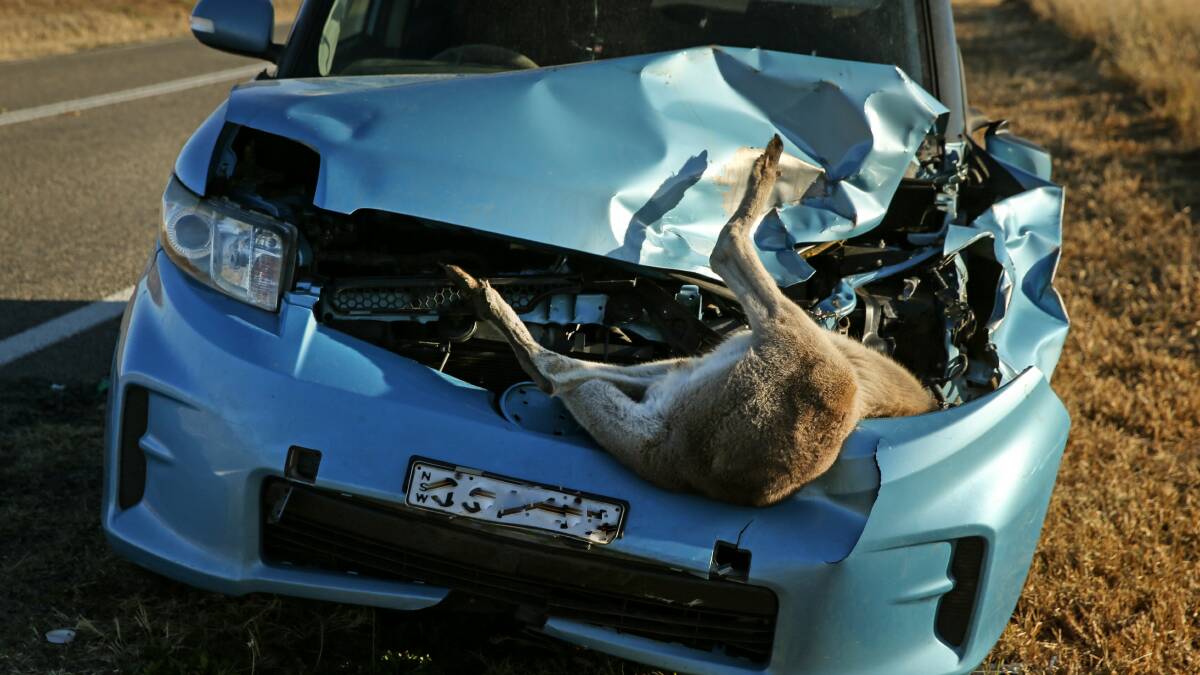
KANGAROOS and utes go together like peas and ham, though with a far greater likelihood of a fatality.
Subscribe now for unlimited access.
or signup to continue reading
Because of this, any driverless vehicles deployed in Australia will need to be able to deal with native wildlife, such as kangaroos and emus, in a way which minimises the chance and outcome of collision.
In a recent announcement the Minister for Roads, Maritime and Freight, Melinda Pavey said a Smart Ute trial will be developed by the Liberals, Nationals, industry and Dubbo Council to develop technology to collect data on the behaviour of kangaroos.
Despite launching the ute with fellow National, Member for Dubbo, Troy Grant, and Nationals candidate Dugald Saunders last week, it is expected it will take at least eight months to retrofit the Toyota Hilux crew cab with automation technology from British company Conigital.
While media surrounding the launch has portrayed the trial as a first for kangaroo avoidance technology, major car manufacturers have been working on this technology for some time.
Volvo has been collecting data on kangaroos since 2015 and has previously said despite the complexity around kangaroo avoidance it is on track for the delivery of driverless cars by 2021.
READ ALSO:
Minister Pavey said the government is spending $10 million over four years introducing country people to driverless technology through these trials.
Dubbo is one of three regional NSW communities chosen to host automated vehicle trials, the others being Armidale, in the Northern Tablelands electorate and Coffs Harbour in the Ministers own seat of Oxley.
The Minister said the vehicle will operate between Dubbo CBD, Dubbo Regional Airport and Taronga Western Plains Zoo.
Despite the urban locations identified by the Minister, a spokesperson for Transport NSW said understanding how vehicles can safely react to avoid impacts with wildlife will be a key research element of the trial.
“The technology will be able to detect kangaroos in situations where people can’t because of poor light conditions, such as at night,” he said.
“The vehicle will be fitted with cameras, lidar and radar sensors that don’t rely on daylight to see.
“The trial will also focus on developing artificial intelligence models to understand how we can predict the path of kangaroos.”
A spokesperson for Transport NSW said the trial was important because future automated vehicles will need to work across the entire network, including urban and regional areas.
“We need a broad range of trials to test the technology against these different infrastructure specific to regional NSW,” he said.
“We know what works in our cities will not always work in our regions.”
Safety
In August 2017 the NSW Government passed legislation to enable trials of automated vehicle on public roads.
This legislation is supported by national guidelines and the safety assurance process managed through Transport for NSW.
“Each phase of the trial will only begin once initial testing and safety processes have been met,” the NSW Transport spokesperson said.
“Throughout each phase safety will be a major priority, with a vehicle supervisor to be on-board at all times.”
Transport NSW said all trials of automated vehicles in NSW have been developed in accordance with national and state legislation and guidelines to ensure they meet required safety standards.


